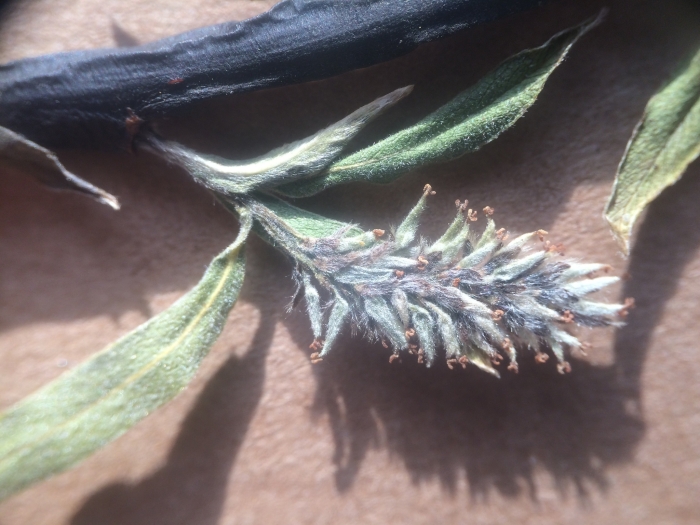Meadow Willow
(Salix petiolaris)
Meadow Willow (Salix petiolaris)
/
/

Étienne Lacroix-Carignan
Public Domain
Image By:
Étienne Lacroix-Carignan
Recorded By:
Copyright:
Public Domain
Copyright Notice:
Photo by: Étienne Lacroix-Carignan | License Type: Public Domain | License URL: http://creativecommons.org/publicdomain/zero/1.0/ | Rights Holder: Étienne Lacroix-Carignan | Publisher: iNaturalist | Date Created: 2021-01-23T09:52:07-08:00 |


































Estimated Native Range
Summary
Salix petiolaris, commonly known as Meadow Willow, is a deciduous shrub native to wet meadows, marshes, and along streams and lakes in the Central and Northern USA, as well as parts of Canada. It typically grows to a height of 5-10 feet (1.5-3 meters) and can spread 5-20 feet (1.5-6.1 meters), often forming thickets. The plant features slender, yellowish twigs and narrow, light green leaves. In spring, it produces small, inconspicuous flowers known as catkins, which are followed by cottony seeds. The bark is smooth and gray, becoming furrowed with age.
Meadow Willow is valued for its ability to stabilize soil and provide habitat for wildlife. It is often used in riparian plantings, wetland restoration, and as a naturalized screen in moist garden areas. This species thrives in full sun but can tolerate partial shade. It requires consistently moist to wet soil conditions and does not tolerate drought. While it is not known for significant pest or disease issues, it can be prone to willow beetle and other insect infestations. Meadow Willow is not typically grown for ornamental purposes but is appreciated for its environmental benefits and adaptability to wet sites.CC BY-SA 4.0
Meadow Willow is valued for its ability to stabilize soil and provide habitat for wildlife. It is often used in riparian plantings, wetland restoration, and as a naturalized screen in moist garden areas. This species thrives in full sun but can tolerate partial shade. It requires consistently moist to wet soil conditions and does not tolerate drought. While it is not known for significant pest or disease issues, it can be prone to willow beetle and other insect infestations. Meadow Willow is not typically grown for ornamental purposes but is appreciated for its environmental benefits and adaptability to wet sites.CC BY-SA 4.0
Plant Description
- Plant Type: Tree, Shrub
- Height: 5-10 feet
- Width: 5-20 feet
- Growth Rate: Rapid
- Flower Color: N/A
- Flowering Season: Spring
- Leaf Retention: Deciduous
Growth Requirements
- Sun: Full Sun
- Water: High
- Drainage: Slow, Wet
Common Uses
Bee Garden, Bird Garden, Butterfly Garden, Deer Resistant, Erosion Control, Low Maintenance, Salt Tolerant, Water Garden
Natural Habitat
Wet meadows, marshes, and along streams and lakes
Other Names
Common Names: Basket Willow, Slender Willow, Saule Pétiolé, Saule À Long Pétiole
Scientific Names: , Salix petiolaris, Salix gracilis, Salix rosmarinifolia, Salix gracilis var. textoris, Salix ×subsericea, Salix petiolaris var. angustifolia, Salix petiolaris var. gracilis, Salix petiolaris var. rosmarinoides, Salix sericea var. subsericea
GBIF Accepted Name: Salix petiolaris Sm.